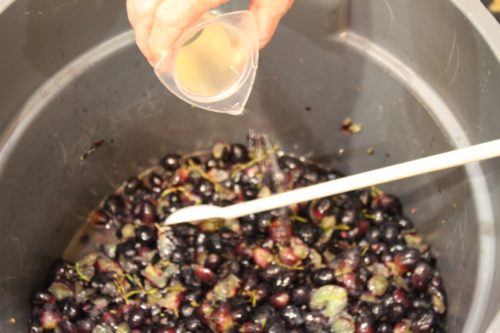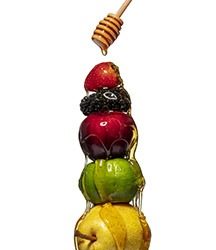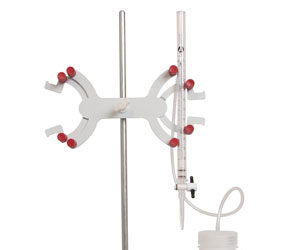 Particularly if you’re making fruit or country wine, one additive that home winemakers will want to make sure to have on hand prior to fermentation is pectic enzymes. Pectic enzymes are proteins used in winemaking for a couple of purposes, most commonly to clear up wine by breaking down pectins to prevent a “pectin haze.” Additionally, pectic enzymes can be added prior to pressing your fruit to help color and juice extraction.
Particularly if you’re making fruit or country wine, one additive that home winemakers will want to make sure to have on hand prior to fermentation is pectic enzymes. Pectic enzymes are proteins used in winemaking for a couple of purposes, most commonly to clear up wine by breaking down pectins to prevent a “pectin haze.” Additionally, pectic enzymes can be added prior to pressing your fruit to help color and juice extraction.
Pectins are naturally occurring polysaccharides found in the cell walls of plants and fruit. Pectins’ gelling and bonding properties are important structural compounds providing rigidity, however they can have a negative effect in winemaking and cause cloudiness or haze. Enter pectic enzymes, which break down pectins, thus eliminating the risk of pectin haze. This breaking up of the larger pectin molecules can also cause more of the fruit’s characteristics to be released in red or rosé winemaking.
Additions for this purpose should be made at the crusher prior to fermentation according to the manufacturer’s instructions. Adding pectinase prior to the start of fermentation allows it more time to break down the pectin as the juice ferments. If you have not added any enzyme to your juice or discover your fermented wine is cloudy then go ahead and add it after fermentation.
If you added pectinase prior to fermentation and your fermented wine is still cloudy, Daniel Pambianchi recommends in Techniques of Home Winemaking to test for the presence of pectin by adding 50 mL of wine to 200 mL of methanol. If heavy whitish sediment forms, the wine contains excessive pectin and should be treated again with enzymes until it clears. If the test proves negative, then the wine may contain excessive proteins, which must be treated accordingly.
While this way of using pectic enzymes can be used in making wine from grapes (particularly for press-run wines), it is most important when making wine from fruit with greater concentrations of pectins such as citrus fruits, cranberries, currants, gooseberries, sour plums, and tart apples, or vegetables such as carrots, potatoes, and parsnips. The enzyme addition should result in a reduced risk of cloudiness due to pectins, but it is still recommended that wine treated with pectic enzymes be filtered.
For the other use of pectic enzymes, add a measured amount to the fruit or vegetable at crushing to help release more juice. When added in a red grape must, pectinase can also result in more gentle phenolic extraction resulting in improved color stability and smoother, rounder mouthfeel.
Because enzymes are proteins, they react with bentonite. For this reason, you should wait at least 24 hours after adding pectic enzymes before adding bentonite.
Ideally, pectinases should be added in temperatures of at least 80 °F (27 °C) to be most effective. It can be added at lower temperatures, but this will slow the time it takes to react. Temperatures too warm or too cold can inhibit enzymatic activity, as can too high of an alcohol content.
Pectic enzymes are available at most winemaking and homebrewing retailers in liquid or powder forms. Both work the same way, but follow the instruction about how much and how it should be added. The powder version must be dissolved in cool water before it is added to the juice or wine, while liquid enzymes can be added directly.






